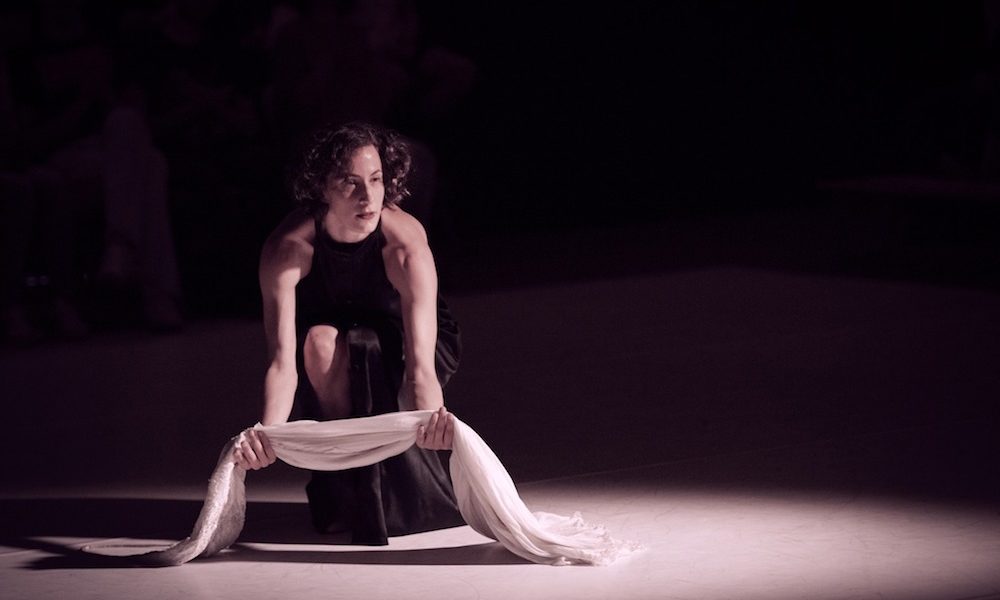Does Finance Impact the Dances We Make? Thoughts on Curtain 2 by Ori Lenkinski

Sometime in the 1990’s, I watched a program on MTV about the lives of successful rap artists. It followed several breakthrough musicians on their path to fame and the dip they experienced after releasing their second album. One after the other they spoke about the immense pressure to repeat the success of the first album, the one that put them on the map. When they created those records as unknown artists, there was little pressure on them. They could do what they wanted, they were free to experiment and, as such, they could tap into their unfettered creativity and innovate. With the second album, it was a different story. They were rich now, known, recognized on the street. Their music supported not only them but also managers, agents, fellow musicians and family members. They were no longer working for themselves but leading a thriving business upon which a number of people relied in order to pay the bills. The effect on their creativity was huge. The term “ sophomore album” was a doomsday slogan, a lowering of expectations of bright stars.
Recently, while talking with a hugely successful choreographer, I was reminded of this program. When he started out, he was just one guy, living in a foreign country, putting some steps to some music. And it worked out. Today, he is the head of a world-renowned company that employs dozens of dancers, technicians and administrators. They tour extensively, perform to sold-out theaters, teach cram-packed workshops wherever they go. The game has changed. This man is no longer making his own art on his own, his art is fueling the lives of many.
The stakes are incredibly high.
I asked if it impacts the work. He said yes and no. He tries not to feel the pressure but it takes effort. He admitted that a work selling out a yearlong tour before ever setting foot in the studio is daunting.
It stands to reason that, when observing artistic works, in this case dance works, we should consider the financial stakes at hand in their creation. Whereas one artist can create something that will provide food and rent for tens of families, another will make a work that will put them in debt. Is the financial gain a factor in the work that is made?
Are artists creating small-scale work with little to no financial gain to be had actually freer to say what they want than the big dogs?
Tel Aviv recently saw the premieres of eleven new works in the annual Curtain Up Festival, funded by the Ministry of Culture and Sport. In Curtain 2, six artists (two individuals and two duos) presented their newest creations. The evening, which was held in the new Zehava and Jack Dellal Studio on the third floor of the Suzanne Dellal Center, took place in the round. One after the other, the artists took the stage with what appeared to be incredibly personal and unpretentious works. In all four of the works made by Ravid Abarbanel, Roni Chadash, Rebecca Laufer and Mattheus van Rossum and Olivia Court Mesa and Yochai Ginton, the choreographers performed themselves (in Laufer and van Rossum’s piece, Cede, they were joined by four additional dancers). In these creations, the offerings felt like gifts the artists were giving themselves. Abarbanel explored her new self following divorce, Chadash stripped away her animalistic illusions to show a casually dressed young woman grappling with the complexities of her body. In Court Mesa and Ginton’s duet, the two, partners on and off stage, celebrated the joy they’ve found in dancing together, the wonders of sharing weight with one another and the pleasure of performing in tandem. Laufer’s work turned A Space Odyssey into a physical expression of icy, weightless, moonstruck group dynamics.
None of these works intended to reinvent the wheel or to propose a new perspective on dance. Instead, the artists used the platform to enjoy their craft and to check in with themselves.
When artists of grander stature create enormous productions, they and their colleagues or companies stand to earn a significant amount of money. The sale of tickets translates into money in pockets. Satisfied audience members are likely to purchase tickets once again. As such, there is a real, tangible incentive for such an artist to create a massively accessible work that large groups can connect to.
When Abarbanel or Chadash present their solos, the prospective financial gain is miniscule at best. The sales of tickets feed back into the Ministry’s pockets or pay off the expensive technicians’ fees. They do not pad the pockets of the artists. With budgets for festivals such as Curtain Up (and Curtain Up is one of the best funded projects for independent choreographers in Israel) being what they are, the selected artists often subsidize their creation costs with money earned teaching or working in restaurants. There is almost never enough money left over for the choreographer to draw a fee from the budget. Usually, the artists end up pulling strings, compromising or cashing in on favors to get the costumes and set together.
In such situations, the incentive of the artist to create the work is purely passion-based. What reason would someone have to spend six months in the studio for free other than that they wanted to?
Because the success or failure of such a work bears no financial weight, the work itself is free to be as obscure or personal or uncommunicative as the artist desires.
In the case of Curtain 2, this freedom was deeply felt. It served up a refreshingly candid array of performances. Whether they were blockbusters or not was inconsequential. The artists were present and they were not afraid to do and say what they wanted.
Curtain 2 was presented at the Suzanne Dellal Center on November 23, 2019.
